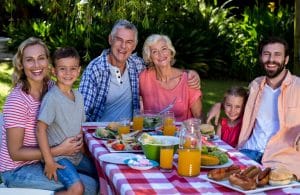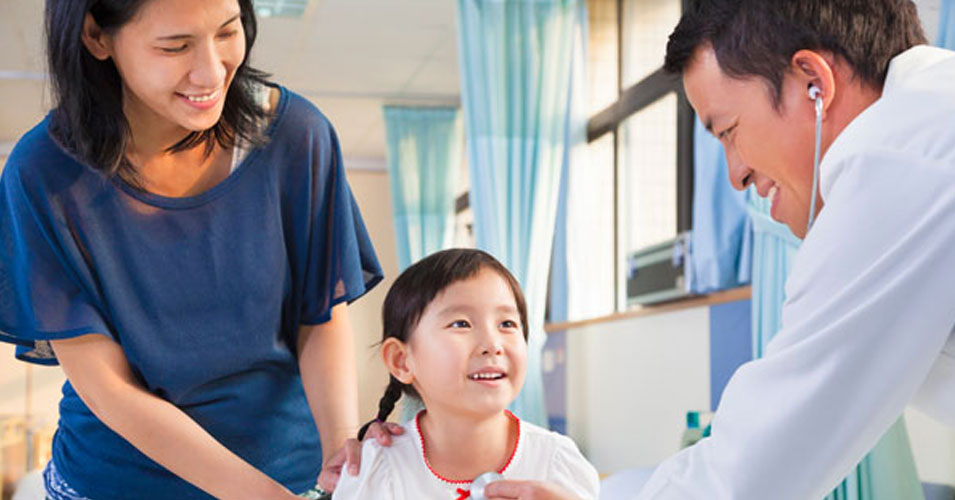St. Joseph’s Hospital Health Center has been committed to serving the immigrant populations of Central New York since its inception in 1869. As the hospital has grown, that commitment has endured. Through St. Joseph’s Physicians Family Medicine, the hospital is able to offer primary care in neighborhood settings.
At the North Medical Center in Liverpool, Michael Tong, M.D., and his staff serve a growing immigrant population. Tong, a graduate of Marcellus High School who came to the United States from Vietnam as a teenager, understands the needs and concerns of newly settled patients (many also from Vietnam). He is sensitive to cultural differences that distinguish them from their American-born counterparts.
Tong, a doctor with St. Joseph’s Health since 2003, recently spoke with Family Times about the unique challenges his patients face.
How does your personal experience help you establish trust with your patients?
Michael Tong: It is significant. I find that my patients seem more open. There often is a list of concerns and medical problems they want to address. This is especially true for psychological and domestic issues, which almost never get brought up when you have to go through a translator. Also, these patients often return to me for a second opinion when it comes to making important medical decisions. Trust is built through my relationship with these patients.
What health issues are more common to immigrant populations?
MT: I believe language barriers pose the most significant challenges. It’s challenging for them to even communicate their health concerns, or discuss health insurance. The cultural and linguistic differences can often result in misunderstandings, lack of compliance, and other consequences that can negatively influence the outcomes of treatment.
Many of these patients don’t want to see a doctor unless they absolutely have to. As a result, I find it challenging to even discuss preventative medicine with them. Things such as treating cholesterol and high blood pressure, yearly mammograms, vaccinations, colonoscopy, and bone density tests often get neglected with this population.
Also, children often come into the country with a significant lack of vaccinations. Tuberculosis and hepatitis continue to be among the more common diagnoses among the Asian population. Elderly who are unable to drive or speak the language often live in isolation. This can lead to depression and anxiety. I don’t think we address enough the psychological side of medicine in the immigrant population—who are, unfortunately, the most at risk.
What other challenges do your patients face?
MT: Lack of health insurance is one of the leading obstacles preventing them from seeking health care. Many of my patients are not able to afford health coverage. Because of this, I think they are less likely to adhere to treatment regimens, or (they) delay in seeking medical care.
How does your office address these issues?
MT: For our Vietnamese patients, we have staff that can speak the language. Our office also tries to be proactive with insurance issues. We offer advice on how to select a plan that most fits their needs. For those without insurance, we have payment plans that can make the medical costs more affordable.
St. Joseph’s Hospital is also making an effort to recruit more staff that can speak the language. We also offer documentation in different languages at the visits. For many elderly patients, their children work during the day and cannot provide transportation for their parents who seek care with us. We offer evening and weekend hours to help.
I am fortunate to work with a great staff. From reception to nursing, we treat every patient like we would like to be treated. This is good for patient care, regardless of what culture or what racial background a patient may have. Many on our staff are making efforts to learn patients’ native languages. I also try to learn languages in my spare time. I speak some Spanish; I hope to learn more.
For those patients who can’t speak English, just being able to hear a few words in their language is enough to bring a smile to their faces. It is also a way to say, “I do appreciate you and respect you for who you are.” St. Joseph’s Hospital also has a CyraCom phone system (a translation service) to help.
How can health care providers be more conscious of the needs of immigrant patients, no matter where they are from?
MT: We strive to provide the very best services to all of our patients, not just a specific group of them. However, we are often under time pressure, which can hamper our ability to assess fully the clinical situation—particularly when it involves cultural and linguistic barriers. This can increase the likelihood of physicians resorting to stereotype, or making quick judgments without sufficient information. I think this is dangerous.
I think we should be more aware and sensitive to cultural differences. We should accept that every patient has a culture. We should embrace (our) diversity, and avoid letting personal beliefs, biases or behaviors influence our ability to treat patients.
We have a very diverse community and I feel blessed to take care of many immigrants. I have many Vietnamese and Hispanic patients that I can communicate with in their languages. We also take care of patients from other countries such as China, the Philippines, Korea, Cambodia, Laos, Italy, Turkey, India, Germany, Cuba, Serbia, Russia, Poland. And our patients are very understanding and very loyal.
If organizations that serve patients with limited English proficiency can employ and train a bilingual staff, not only can it help with the interpretation, it can help to serve as a liaison with community members. Health care providers can actually build trust through this type of relationship.
When you refer immigrant patients to specialists, what considerations need to be addressed?
MT: We try to refer to providers that have translating services. We make sure the patient has a family member who can speak English with them at the visit. In addition, I try to make my referral notes complete, in order to provide specialists with information prior to seeing our patients. Being able to communicate with some of these patients in their language, I can get a better history and a better picture of what’s going on.
We try to be sensitive to cultural needs, too. For instance, Asian female patients prefer to see female OB-GYN specialists. We try to arrange for that. Transportation is a challenge for many of our patients, so the distance to the specialist is an important factor to consider.
What has it meant to you, as a physician and as an immigrant, to serve this particular population?
MT: It is very important. I truly appreciate their trust and loyalty. I think it is a very special group of patients I take care of, and I can’t say enough how much I appreciate them.





